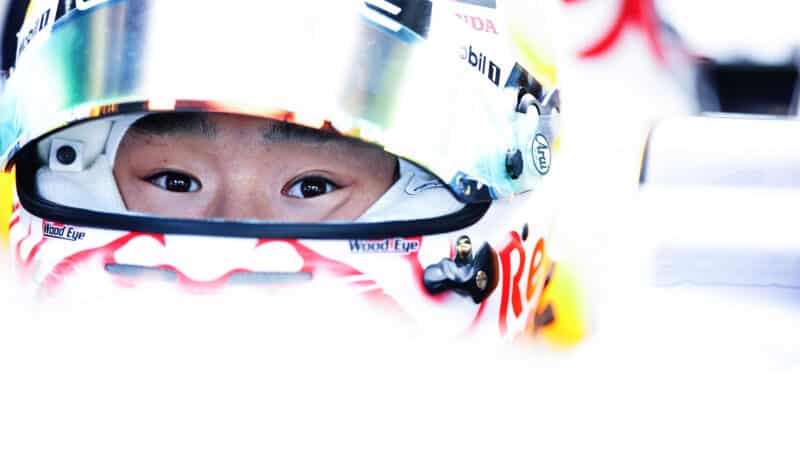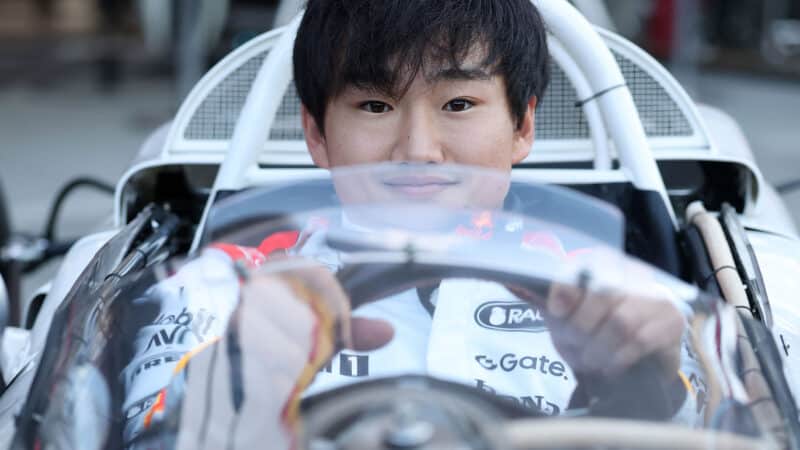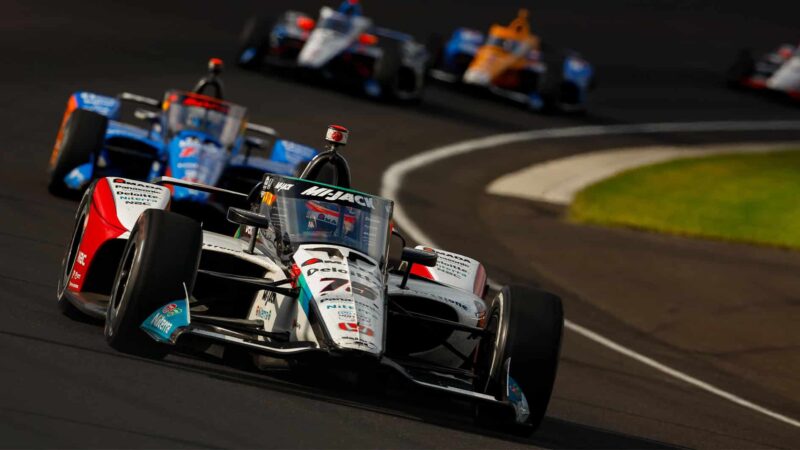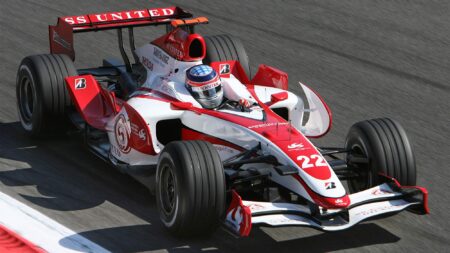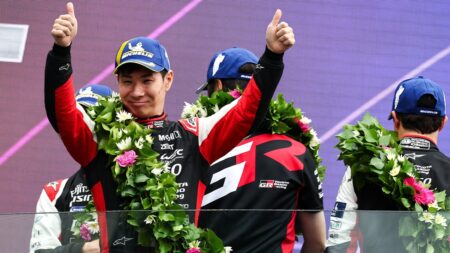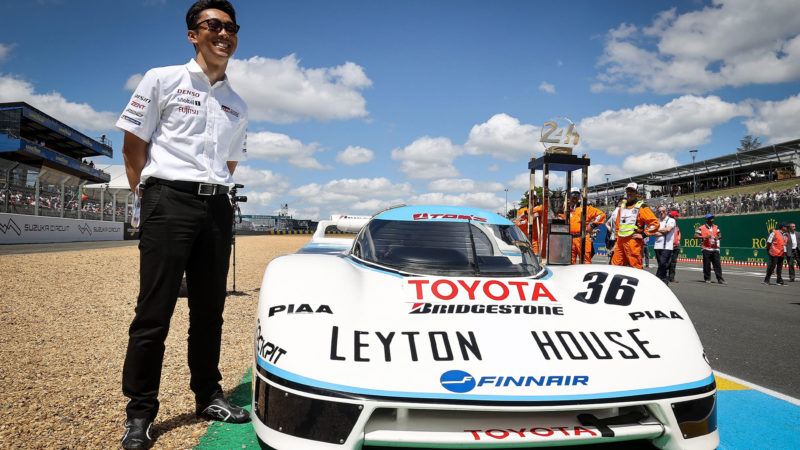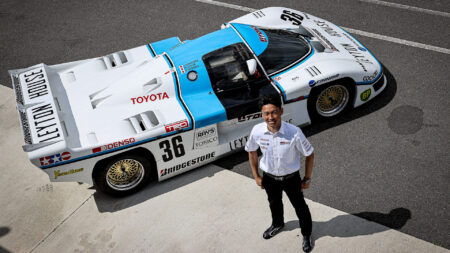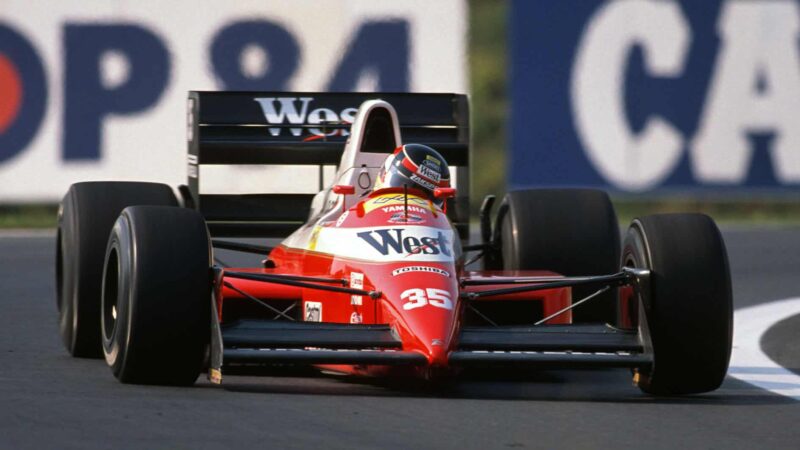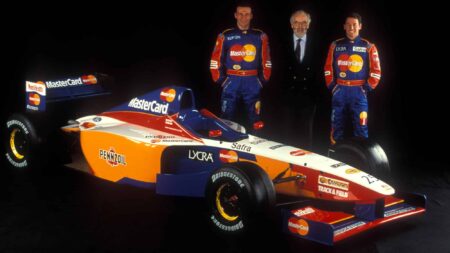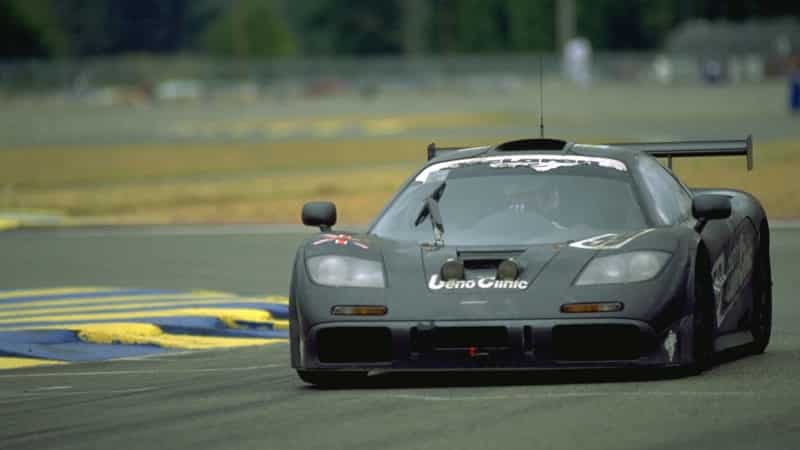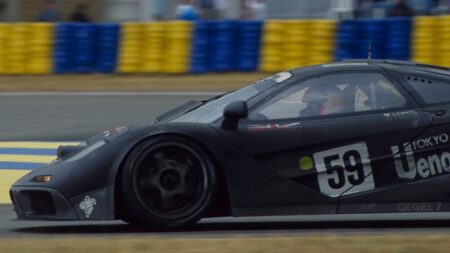The Tokyo native blitzed 2001 British F3 with 12 race wins, becoming its first ever Japanese champion.
He leapt straight to F1 with Jordan for 2002, but found the going tough. Notorious for crashing, he was let go by the team but would score a podium for BAR two years later.
After a final grand stint with Super Aguri, famously scoring points twice for the backmarker squad run on a shoestring, it was in IndyCar that Sato’s star truly rose.
He became the first ever Asian driver to win an IndyCar race in 2013 at Long Beach, before claiming a pair of Indy 500 wins in 2017 and 2020.
Sato will make a one-off appearance at this year’s 500 for the Rahal team as he bids for a hat-trick of victories – in between being an executive advisor for Honda’s racing efforts.
A challenger to Tsunoda as Japan’s greatest?
Kamui Kobayashi
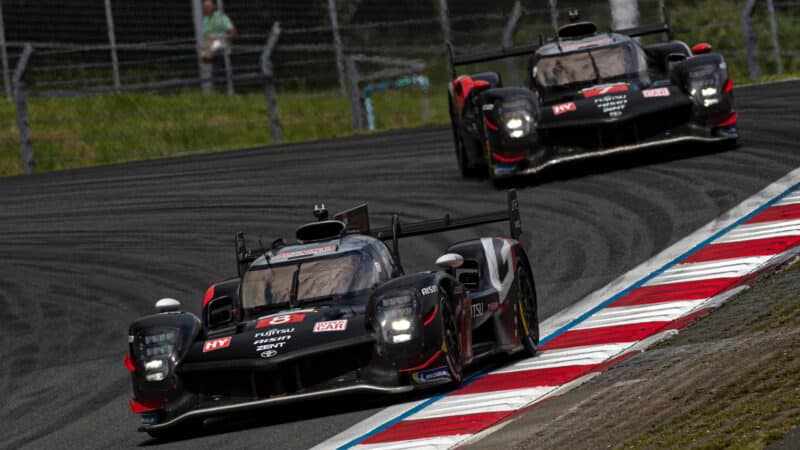
Kobayashi (in Car No8 at Fuji last year) has spearheaded Toyota’s sports car attack
Toyota
Similar to Sato, Kobayashi arrived in F1 with a bang, but is now viewed as a safe pair of racing hands.
